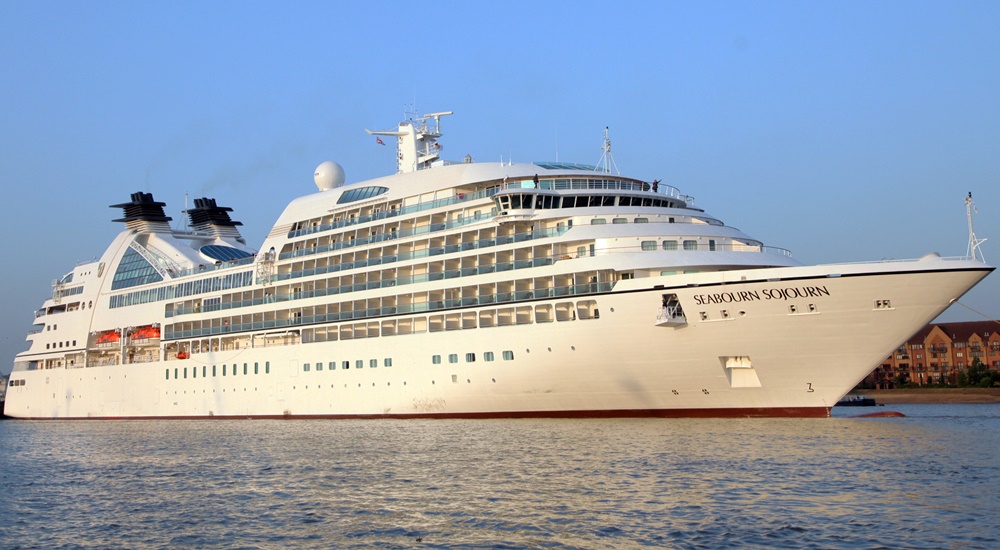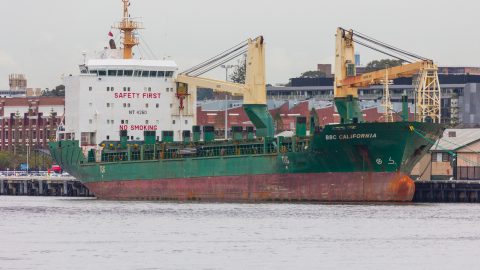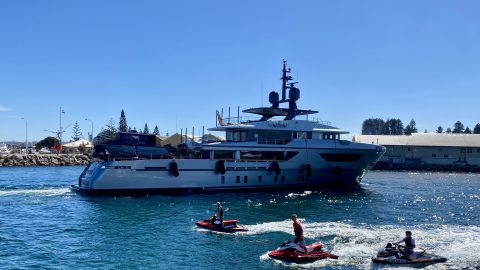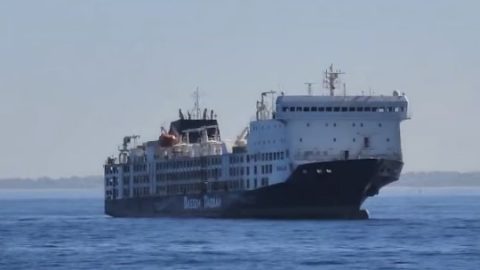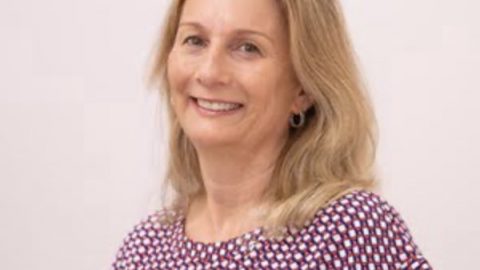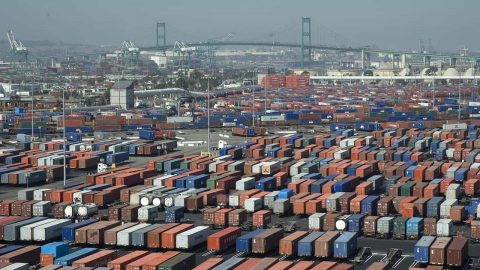The STS Leeuwin was launched in August 1986 in time to fulfil a charter for the America’s Cup. This charter went a long way to setting up the ship financially and to ultimately fulfil its own charter, which was based on personal development for the youth of Western Australia.

STS Leeuwin after suffering collision
Fast forward to the 30th August 2024 and disaster strikes, when a large container vessel demasts the Leeuwin and destroys all the spars and associated rigging, whilst tied up in Fremantle harbour.
Repairs to the masts and rigging is currently underway and will no doubt be paid for by the container ships P&I (Public and Indemnity) insurance.
So – does the ship and the Leeuwin Ocean Adventure simply pick up from where it left off, in terms of running a sail training program for the youth of Western Australia ?
My answer to this question is – maybe not.
I believe it is time for a change and that a new vessel and a new charter for a different demographic is required, for the following reasons.
Age and Design
The Leeuwin is coming up for 40 years of service. This is old for a modern vessel which essentially attempts to generate income from operating 365 days of the year. In terms of sailing vessels – it is not so old.
It has a steel hull and has been maintained primarily by volunteers with a tremendous amount of care, love and devotion.
The design of the Leeuwin by naval architect Len Randall is nothing short of brilliant and it is very hard to find a square rigger around the world that is a ‘better fit for purpose’.

STS Leeuwin, Fremantle. File photo. Credit Jean Hudson
This particularly relates to the deck layout, the rigging and the below deck configuration.
However the ship was built in the 1980’s, with 80’s materials, 80’s machinery, 80’s technology and according to the charter of the then named – Leeuwin Sail Training Foundation.
Built locally at the then AIS Shipyard in Henderson, costs were absolutely slashed by the use of apprenticeship labour. This was a great narrative and tied in well with the Foundation’s charter.
The downside to reducing costs was that most of the bulkheads have a ‘surfable’ wave in them. The original design called for a single large engine and a prop sitting right in front of the rudder, to give good water flow across the rudder and thereby good steerage. Unfortunately there were 2 smaller engines – otherwise known as ‘egg beaters’ – on offer, at an irresistible price. Since then, the vessel has handled as what could best be described as ‘groggy’.
The ship underwent a major refit in 2012, at a cost of $3.5 million. This has gone a long way to ensuring the ship still meets all of the safety and legislative requirements of a modern ship, sailing in Australia.
Charity, Corporate and Charter
There were 3 vital and non-negotiable cornerstones to the Foundation’s charter –
• the vessel was for the personal development of the youth, and in particular the underprivileged youth, of Western Australia
• since the Foundation was a charity – the vessel was not to be used for private charters
• the Foundation should utilize volunteers, donations, pro bono services and in-kind financial arrangements, wherever possible; it had to, in order to survive
The above was definitely set up with the highest of moral intentions and since the Foundation was a non-profit organization and its mission was for a worthwhile cause – volunteers readily gave their time and labour.
Clients and Demographics
In the 1980’s I was in my twenties and the primary goal in one’s life – was to seek as much adventure as possible. Whether it was rafting the Franklin in individual rafts, cycling the SW, walking the original Bibbulmun, motorcycle touring around Australia, deep sea diving, flying hot air balloons or caving at Cocklebiddy (Nullabor) – the notches on the belt just keep coming.
It was through this adventure seeking, I was introduced to square rig sailing. It then became an addiction and finally a career. Initially the dominant age group on board was between 17 and 35 and the length of the waiting lists was an indication, the voyages were regarded as exciting and desirable. Later on the sail training program matured somewhat, which fostered the realization – the larger the societal cross section of age, ethnicity, gender, socio-economic backgrounds, etcetera for new trainees – the better the personal development and learning experiences. The motto of the American Sail Training Association – “Not Learning to Sail, Sailing to Learn.”
2025 Onwards
It would be fair to say that over the last 20+ years, the Leeuwin Ocean Adventure (LOA) has survived financially – but only just. It has scraped by. Lots of volunteer labour, lots of ‘free-bees’ and plenty of pro bono. This is not to distract from the incredible efforts of the paid staff, the CEO’s, The Board, the volunteers and the multitude of organizations which have all contributed to the Leeuwin’s survival. Absolutely legendary.
The only down side of the Leeuwin family was in 2023 – when the LOA ended up in administration. Twiggy Forrest threw his philanthropic hat into the ring and the vessel is now technically owned by the Mindaroo Foundation. Thanks Andrew.
However things have changed; in fact everything has changed.
In the last 40 years – aspirations of Australian youth has changed. This is somewhat inevitable and of course it has to change. It has been changing since millennium.
The charity, volunteer and philanthropic era of organizations has also changed. Now we look to a more corporate world, one of sponsorship, advertising, logos and brand recognition.
Changes to the work, health and safety space has had a profound effect on the Leeuwin. Insurers now forbid so many of the activities that were deemed to be voyage highlights, since the risk factor is viewed as too high.
Shipping has changed. Shipping continually changes. It is a global trading industry, so it is irrelevant where the changes occur – they spread like a virus.
Proposal
A new ship for Western Australians.
Via the insurance money – bring the Leeuwin back to a workable and viable concern; then allow her to retire to calmer waters and a less hectic schedule. To those who have fallen in love with Leeuwin, she will not be leaving the planet. Take pride in your personal contributions and retain your skills – they will be needed.
If WA was to gain a new square rigged sailing ship – the biggest advantage would be – modifying the operating charter.
It could be for the people of Western Australia and predominantly for the youth of Western Australia. The below operating plan (annual schedule) – would bring long term financial stability to the ship and its operational organization –
• 90 days for the Education Department, high schools and universities
• 90 days for maintenance, day sails, events, ship movements, etcetera
• 90 days for chartering
• 95 days for a sail training program for the youth of Western Australia.
I realize there would be a group of traditionalists and long term Leeuwin devotees, who may think selling the ship would be a travesty and a betrayal of everything that has gone before.
Before I started on this idea, was I asked – what if the Leeuwin is not repairable ? What if we were forced to start again ? It was only after this question was asked that I realized, we now have 40 years of square rig sail training experience in this State and we are now ready to build a vessel to serve the needs of the community for the next 40 years. The current vessel has struggled for the last 20 years and if nothing changes, the next 40 will be no different.
In terms of a new ship – obviously it is a sailing ship and the barquentine rig suits WA’s coastline. So a starting point could be something very similar to Leeuwin. A new rig would give us the opportunity to build a stronger and more efficient ship, with more capability and less maintenance. A small draft as it has at the moment, is useful in WA to enter the shallow areas like Shark Bay. However with a retractable hydraulic skeg – the ship would sail so much more efficiently for the remaining 90% of the time.
The thought of charter voyages I am sure installs seasickness into some. However if these charters were to Macquarie Island, Heard Island, Big Ben – or eco-voyages in the Kimberly or the Recherche Archipelago, this is a far cry from the ‘white boat’ charters found in the Mediterranean and Caribbean – which appear to be only for the mega-rich. I imagine these trips would provide some much needed and long lost adventure for Western Australians and also give some of the more ‘chronologically challenged’ among us, a chance to fulfil a lifelong dream.
The charter voyages could also run a much needed training course for those young Western Australians wanting to gain employment in the charter boat industry as Stewards, Cooks and Deckhands. There are already thousands of young Aussies employed overseas on such vessels. Currently the only requirement is a 5 day safety course, with no operational component.
I started on Leeuwin in 1988 and spent 3 years as the Bosun / Second Mate (and relief Chief Officer) and a further 2 years as Chief Officer setting up a brigantine for the Japanese Sail Training Association. There are dozens of others in WA who have experience in sail making, spar making, rigging and working a square rigger. There is such a wealth of knowledge in this State to build an appropriate vessel that is innovative, relevant and beautiful.
Being able to have a lecture room in the Main Saloon, an enlarged charthouse / Bridge for cadet training, a galley capable of producing restaurant standard food (if required) and a small laboratory to aid in marine science endeavours – would all be welcomed additions.
Although the sails, the rigging and the deck may all look like a ship from the 1850’s, with the latest technology installed – activities like collecting hydro-graphic survey data, oceanographic research and even tracking whale migration, would all add to the diversity and resilience of the operation.
However for me the greatest innovation could be in decarbonizing the vessel and the organization.
The possibility of running an electric main thruster which would enable other sources of electricity to be used, whilst still being supplemented by a small low-sulphur diesel generator, is all possible in 2025. There is an absolute myriad of renewable energy options in this space, far too many to expand on here.
Q4 2024
Currently we have –
• a severely damaged ship
• maintenance costs which will escalate as the vessel gets older. Probably not exponentially – however certainly linearly with a very steep inclination
• no Management Board
• a vessel and organization which has ‘scraped by’ financially for many years
• a somewhat restrictive charter which is not fulfilling the needs of a new client base and has undergone generational change
• the skillset and experience to build such a vessel in house – i.e. within WA
… and most of all – an opportunity to build a vessel for our coastline and for the people of Western Australia, which will be relevant for the next 40 years.
Roy Lewisson
Master Mariner
~~~~~~~~~~~~~~~~~~~~~~~~~~~~~~~~~~~~~~~~~~~
* If you’d like to COMMENT on this or any of our stories, don’t hesitate to email our Editor.
** WHILE YOU’RE HERE –
PLEASE HELP US TO GROW FREMANTLE SHIPPING NEWS
FSN is a reader-supported, volunteer-assisted online magazine all about Fremantle. Thanks for helping to keep FSN keeping on!
*** Don’t forget to SUBSCRIBE to receive your free copy of The Weekly Edition of the Shipping News each Friday!
****AND Shipees, here’s how to ORDER YOUR FSN MERCH. Fabulous Tees with great options now available!
